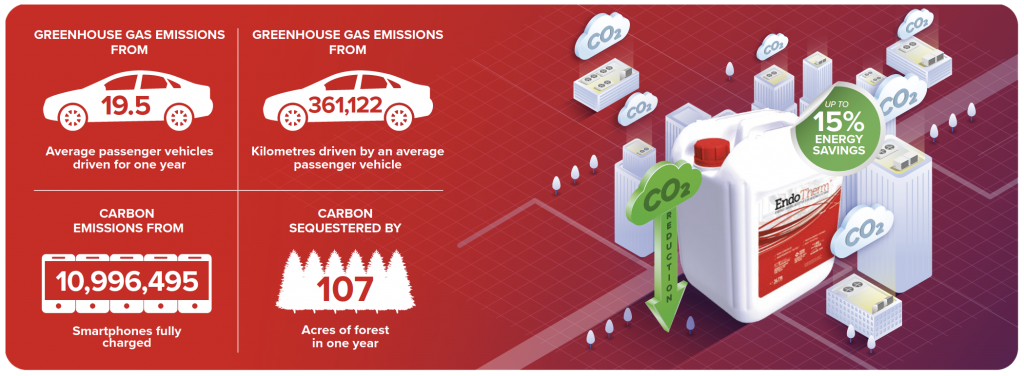Four Calgary Schools Reduce GHG Emissions & Energy Costs
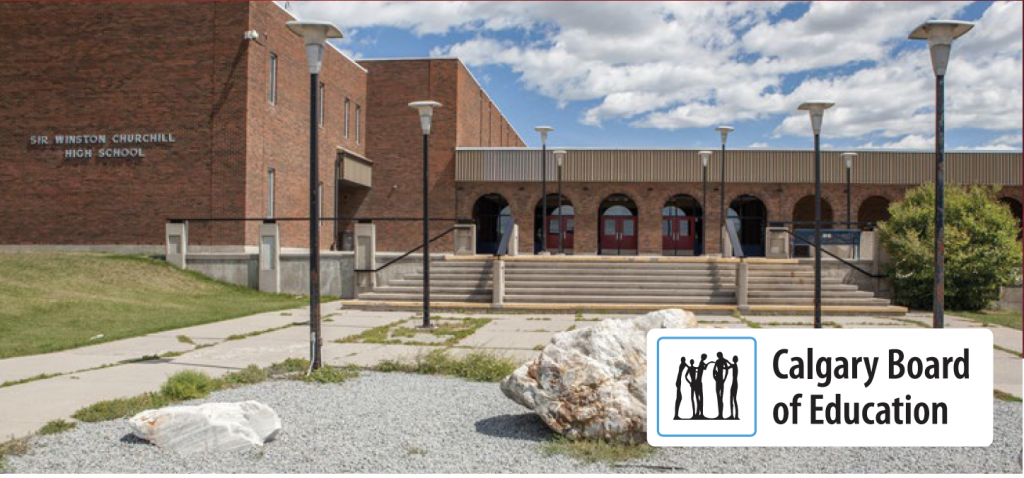
The performance of EndoTherm® was piloted by the Calgary Board of Education in four schools. These were selected as a representation of schools across their district. The goal was to reduce greenhouse gas emissions (GHG) and lower energy costs.
The chosen pilot sites were paired with alternative sites of similar size/age and boiler specifications. A control analysis will be conducted at these four sites to act as a comparison to the EndoTherm pilot sites. EndoTherm was installed in November 2021.
The 8 sites that were selected had no significant changes in operation (bar initial COVID lock-downs) or new technology implementations.
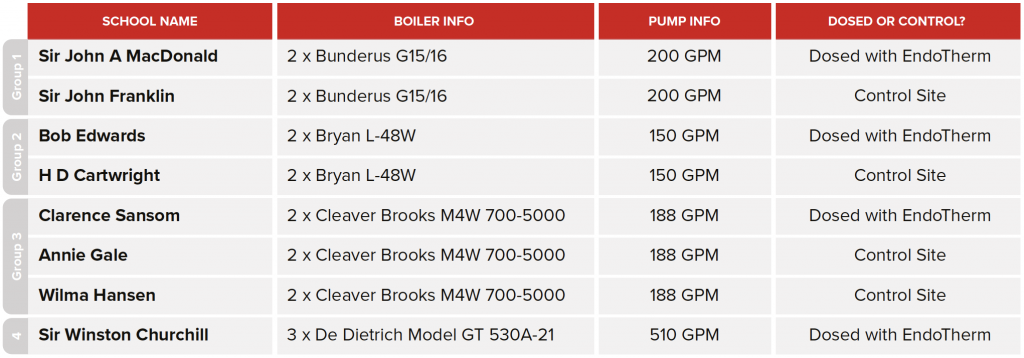
METHODOLOGY
The analysis methodology takes guidance from IPMVP (Option C) looking at gas bills. Space heating is the dominant load for each of these school facilities.
A baseline was created using monthly billing data from March 2019 to November 2021 normalized using Heating Degree Days date from nearby Calgary International Airport (CYYC) at a baseload of 18.5°C.
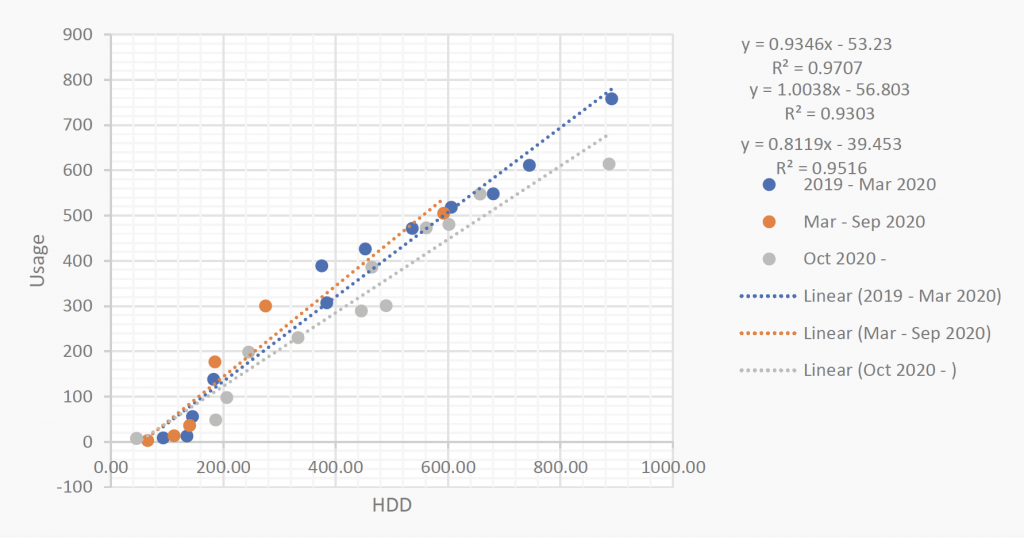
Figure 1: The baseline analysis at HD Cartwright
The baseline was split into various time periods including data pre-COVID, data during the initial lock down period and finally data since Fall 2020 which was often in line with school re-openings and ASHRAE guidance. For the most part, schools showed changes in their natural gas consumption from Fall 2020 and thus this shorter baseline was used for the EndoTherm analysis.
The chosen analysis uses the trend-line from the baseline to predict gas consumption for each monthly period. This is compared to the recorded values to determine changes in system effciency. All sites were monitored up to the end of April 2022.
RESULTS
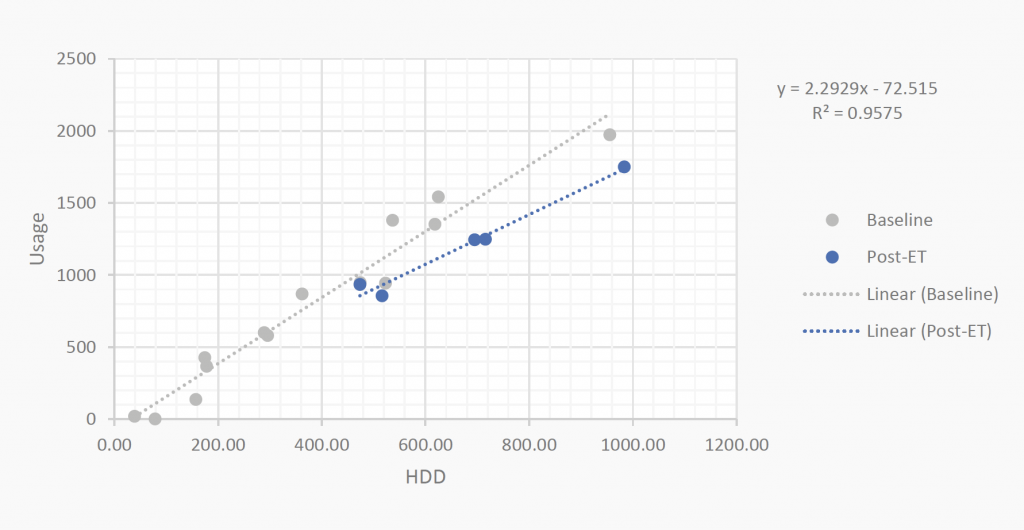
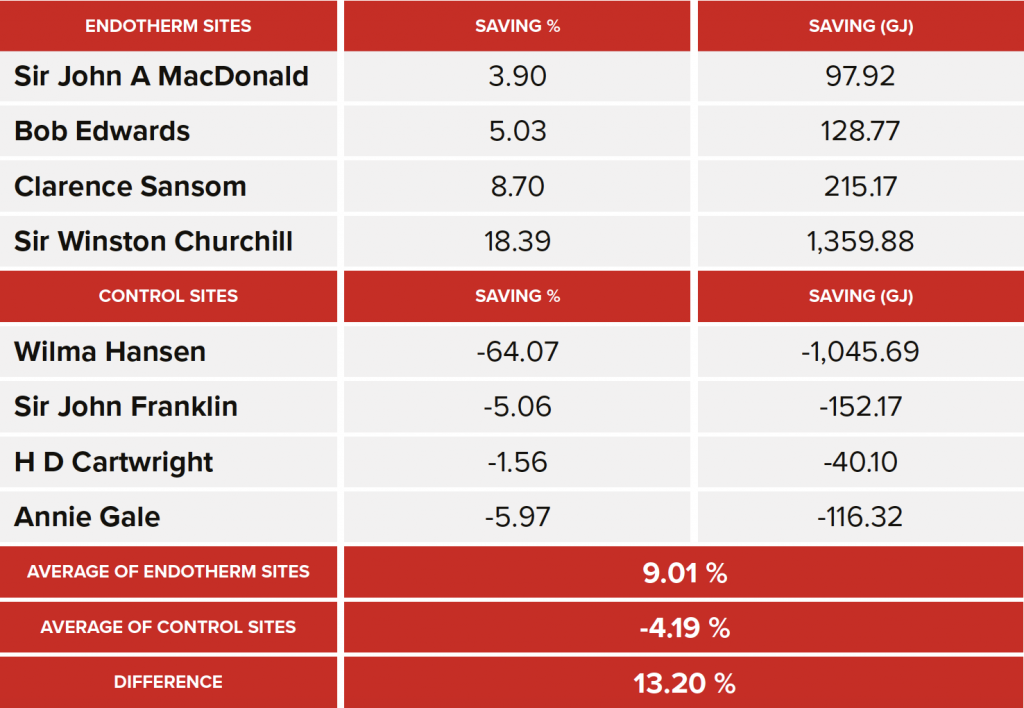
Over the 5-month pilot period. The four buildings showed an average improvement of 9.01% of natural gas compared to the historical baseline. One of the control sites (Wilma Hansen) showed a significant increase in natural gas consumption (64% increase) and is under investigation but has been removed from the analysis.
The remaining three control sites all recorded slight increases in consumption averaging 4.19%. Thus the difference between the two groups is 13.20% and can be seen as an improvement due to EndoTherm.
All four EndoTherm sites showed savings whilst all four Control sites showed increases in natural gas consumption which can be seen to validate the methodology to provide confidence in the result.
Over the 5-month pilot period, the four EndoTherm dosed sites saved 1,801.74GJ of Natural Gas. This is a saving of $14,413 based on a unit price of $8/GJ including federal carbon tax. The expected ROI of this project is within 12 months.
A reduction in natural gas consumption is also a reduction in greenhouse gas emissions. A saving of 1,801.74GJ is equivalent to 90,400kg of CO e which equals:
